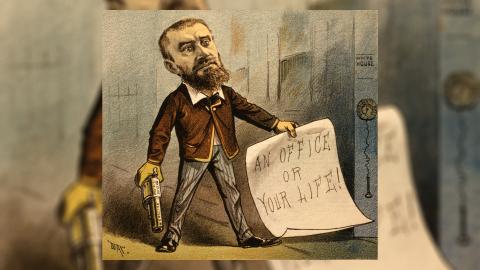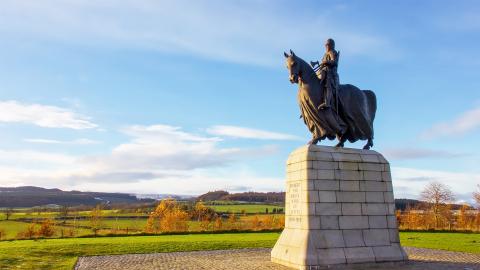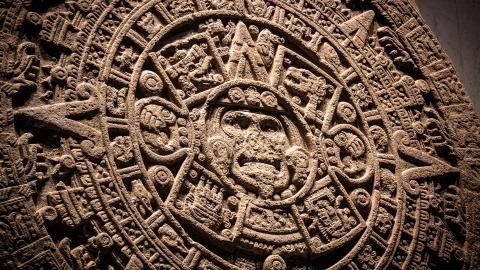'A mixture of strength and seduction’: Bringing the Roman Empire to life in ‘Anno 117: Pax Romana’
Ubisoft historians Thierry Noël and Eve Ben-Haïm reveal how Anno 117: Pax Romana brings the Roman Empire to life through strategy and authenticity.
Anno 117: Pax Romana is the latest instalment in the acclaimed city-building strategy video games series. Players are invited to step into the Roman Empire and take on the role of a Roman governor tasked with building and managing provinces, shaping cultures and defining their legacy.
The incredible detail of the game means players need to think carefully about every decision they make. How will they balance the needs of their people with the demands of the emperor?
To learn more about the game and the development process, Sky HISTORY spoke to two people who worked hard to ensure the finished product was as entertaining and historically accurate as possible.
Thierry Noël, Ubisoft GSI Senior Manager, Humanities & Inspiration, and Eve Ben-Haïm, GSI Inspirational Content Advisor both contributed to the extensive research that helped recreate the Roman Empire.
Anno 117: Pax Romana is available to download now.
1. What drew the team to Ancient Rome as the next setting for the Anno series?
Thierry Noël: Ancient Rome is a fascinating period in history, about which there is still so much to know and explore.
With the Pax Romana establishing itself for good, the Empire also became a space of relative peace, stability, and prosperity. It was a period of consolidation for the Empire, notably through the Romanisation of conquered territories, a mixture of strength and seduction, trade, cultural exchange, and strategic choices at both the imperial and local levels.
All this made it an ideal candidate for a strategic city-building game like Anno 117: Pax Romana!
2. This is the earliest historical period ever explored in the series. What new design opportunities did that open up?
Thierry: The typical Roman city was at the centre of the imperial world and the process of Romanisation. It was a centre of decision-making and exchange, blending the Roman way of life with local realities and customs.
As governors, our players have to take strategic decisions and choices that determine the future of their territory. It is a unique and engaging experience offered by the extraordinary context of the imperial Roman world in 117 onward.
3. To what extent are the events, characters or places in the game directly inspired by real life?
Eve Ben-Haïm: Research work for different games takes different shapes. More than a focus on specific details, Anno takes inspiration from a more general context to then translate its subtleties into game design, arts and world building.
Understanding the pillars of what makes the Roman Empire, materially (e.g: its infrastructure, its take on city planning) and conceptually (e.g: the progressive Romanisation, the relative cohabitation of different cultures integrated within the Empire) were important subjects of reflection for our team.
Thierry: In this regard, recent contributions from history and archaeology on the process of Romanisation have been a major inspiration. Needless to say, influential writings such as those of Dame Mary Beard have been part of our reading.

4. Can you tell us about the research process that went into building the world of Anno 117?
Eve: Our research process combined intensive reading of academic work, partnerships with external historians for asset reviews and playtests, and an immersion in popular cultural productions referencing the Roman Empire.
Thierry: We read a lot, discussed, and of course worked closely with the development teams to meet their needs and feed their creativity!
5. How did historical research and geographic analysis inform each other during development?
Eve: Anno 117 marked a milestone for our research team, as it was the first project for which we proposed an in-depth interactive map to better explore some research topic. Our internal map-making tool, Cartograph, brought together our historical and geographical expertise into an ambitious pedagogical support. From political zonings to key battles and fortifications, including various cultural, religious, and social information, our map was a great example of virtuous collaboration, intersecting our research perspectives.
6. The game spans very different landscapes, from Latium to the Celtic wetlands of Albion, so what were the biggest world-building challenges in capturing those contrasts in terrain, climate and settlement patterns?
Eve: Geography plays an important role in many game genres, but there are a lot of specificities to city-building and management simulations that makes it all the more impactful.
The team put extra care into understanding the particularities of the Roman city planning, especially considering its lasting importance in our contemporary European landscapes. Designing innovative city management gameplay from such an iconic historical context was an exciting challenge. A lot of architectural work was done by the teams, from understanding how cultural differences impacted the overall appearance of buildings to creating beautiful sceneries with the way people lived in such places.
Aqueducts management is another unmissable feature from the Roman Empire that Anno 117 takes inspiration from.
On a more original note, I am very fond of the importance of wetlands in Anno 117. While sometimes neglected from our collective perceptions, wetlands played a major role in the history of humanity. They are very valuable habitats for a rich biodiversity, they provide interesting resources for human populations and they act as buffers from natural risks.
Anno 117 truly emphasises the importance of wetlands for the local communities in a way that I have never seen before in city builders and management simulations.

7. What kinds of natural resources were available to communities during this period, which proved the most influential, and how are their extraction, processing and trade represented in gameplay?
Eve: Different kinds of resources are represented in Anno 117. Some classical assets remain present: you will need to harvest wheat, chop wood, mine ores, farm cattle… The game features several interesting takes on the matter. For instance, players can grow lavender fields. Wetlands feature specific resources from their habitat.
An example I particularly like: you can manufacture garum in Anno 117. This fish sauce, whose taste compares to the Vietnamese nuoc mam, was a beloved staple ingredient in the Roman Empire!
8. How did you balance historical accuracy with creative freedom, both in gameplay design and in portraying Roman and Celtic societies?
Thierry: Creative freedom and historical accuracy are not mutually exclusive: in both lies interesting elements of both creativity and inspiration when crafting an immersive and authentic universe. Authenticity is a concept we see as the way something does not aim at accuracy but at feeling true.
Like in most historically-inspired games, compromises are mandatory to ensure that the designers and artists can work their magic. Historical settings invite players in universes where they can further dive into a certain period of history and sometimes challenge their knowledge or expectations.
9. The Roman Empire was vast and varied, so how did you ensure each region in the game feels authentic and distinct, while still fitting within the broader Anno experience?
Eve: Anno 117 plays on different natural environments, cultures and architectures to mark the differences between the provinces. Each of them enables a set of actions that are specific to their geographical context. Eventually, players can connect both to further develop their land and expand their control.
The Anno experience, mixing exploration, expansion and conquest, in a mix of hard and soft power, fits perfectly within the diverse setting offered by the Roman Empire.

10. How does Anno 117 reflect the diversity of the Roman world, both within the Empire itself and among the cultures beyond its borders?
Thierry: The progressive Romanisation of the territories and cultures under Roman control was an important research aspect in the creative process of Anno 117. This was a complex mix of hard and soft power, of force and seduction, which nurtured the spread of the Roman way of life while preserving local customs.
The game showcases this diversity by offering different sets of options, possibilities and environments for each province, and to each playstyle, from architectural, environmental and cultural standpoints. Through strategic decisions mixing imperial will and local challenges, players can either stay close to the Latium, embrace Albion’s particularities… or even mix both! It is an example of how creative freedom and authenticity stakes combine into a multidimensional experience of the Roman Empire’s dynamics,
11. What do you hope players will take away from Anno 117: Pax Romana, both in terms of how they feel about the Roman Empire and how they think about empire, culture and history itself?
Eve: The Roman Empire was a fascinating time in our history that cradled early forms of globalisation in the Mediterranean region and further. Our present-day cities, networks of roads, or artistic inspirations have been greatly influenced by the Roman Empire.
Hopefully the players of Anno 117: Pax Romana will expand their views on the Roman Empire, not only as a powerful military power, but also as an intricate cultural entity in which coexisted, in relative peace, different perspectives on what societies aspired to.
12. Are there any other historical periods or civilisations that you think would be especially exciting for the Anno series to explore next?
Eve: Luckily, the history of humanity is filled with interesting times and places to explore and take inspiration from. Diving into historical settings, I am impressed by how past societies’ ideals and struggles echo into our modern-day experiences. There are interests and inspirations to be found everywhere, anytime!
Anno 117: Pax Romana is available to download now.
















